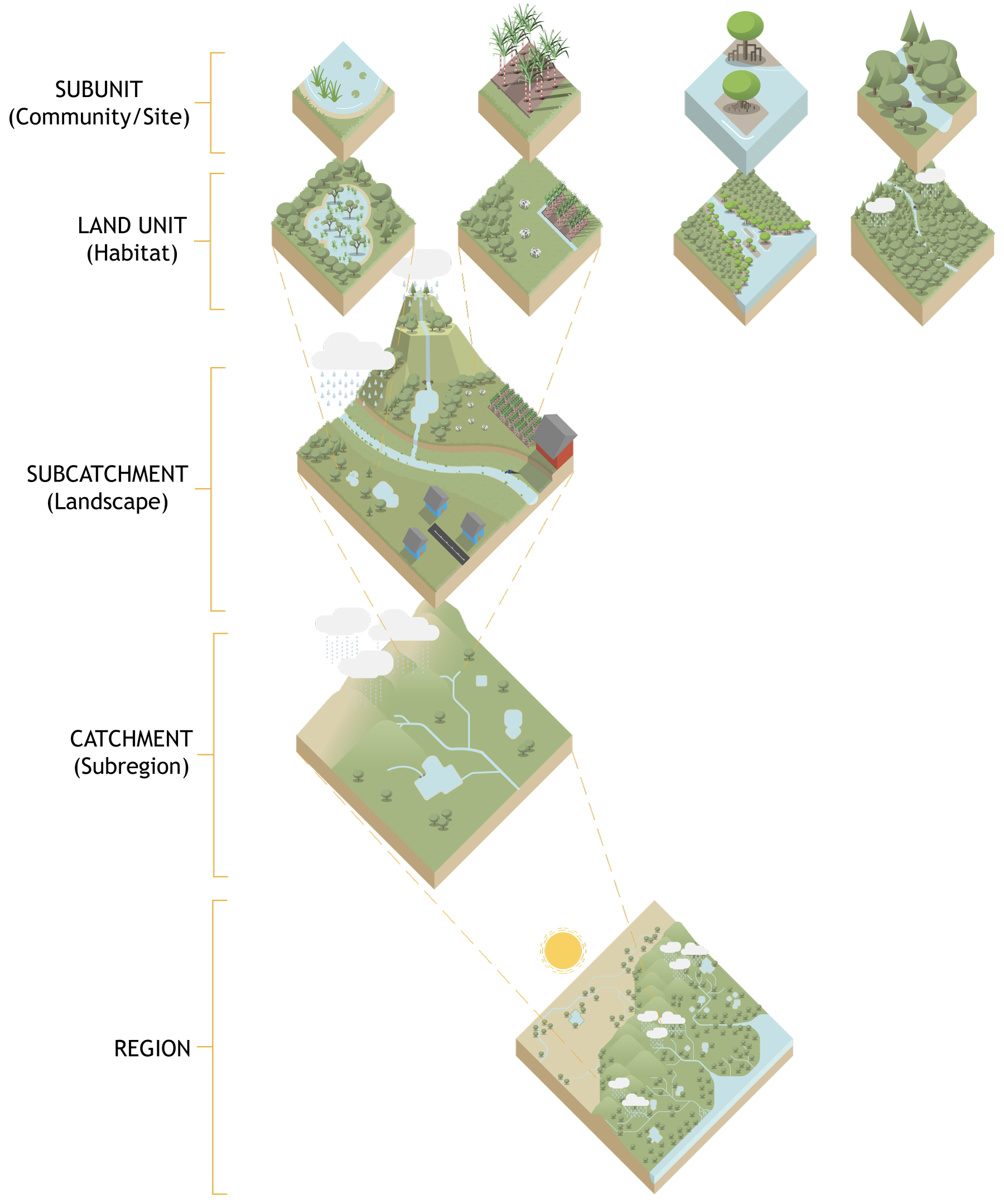|
|
HydrologyHydrology includes the properties of water and its distribution and movement across the ground (groundwater) and the atmosphere. Information in the following section explains how hydrology operates at a range of scales (such as land unit, catchment, and regional) and from different perspectives (e.g. focusing on a particular wetland, a river catchment or a groundwater aquifer)[1]. Quick facts
HydrologySelect from the tabs below
Hydrology is important for understanding the landscape and the ecosystems within it. Hydrology influences landscapes and ecosystems and is itself influenced by the ecosystems. Variable water flows, water levels and connections (known as water regime) affect the biological and chemical processes in an ecosystem. Hydrology is different from hydraulics. How water moves in the landscape is influenced by a range of factors including:
ScaleHydrology is impacted in a different manner by the landscape and ecosystems at different scales. In order to properly manage a catchment or particular part of the landscape (land unit) it is vital to understand how water moves in the broader landscape/ catchment. Various methods are available to assist in understanding the hydrology of a catchment or subcatchment. These include hydrological modelling and the ‘walking the landscape’ process.
RegionA region is an area that experiences similar rainfall, temperatures and weather patterns (e.g. wet tropics). Catchment (Subregion)Larger catchments are made up of smaller subcatchments, which form tributaries to the main watercourse within the catchment. The degree to which the overall catchment affects a smaller subcatchment depends on the degree of connection, through features such as floodplains, where parts of the subcatchment are inundated, during a flood event or through groundwater flows or stream flows. A catchments hydrology is influenced by the region in which it is located. Subcatchment (Landscape)A subcatchment's rainfall, topography and geology are the main influences on the water regime of a subcatchment, including the duration and timing of local runoff, channel inflows, flooding, precipitation and groundwater flows from the broader landscape. Land unit (Habitat)Some land units will have very simple hydrology, e.g. upland rainforest receives rainfall and lose water by evapotranspiration, infiltration or runoff. Others, such as wetlands, lower in the landscape, will have complex interactions of local and catchment runoff, groundwater flows, infiltration and evapotranspiration. Subunit (Community/Site)A subunit is part of a land unit which may be different than other parts of a land unit, for example, a particular plant community, or flow paths within a wetland. Additional Information
Pages under this sectionReferences
Last updated: 28 September 2021 This page should be cited as: Department of Environment, Science and Innovation, Queensland (2021) Hydrology, WetlandInfo website, accessed 8 May 2025. Available at: https://wetlandinfo.des.qld.gov.au/wetlands/ecology/processes-systems/water/hydrology/ |

 — Department of the Environment, Tourism, Science and Innovation
— Department of the Environment, Tourism, Science and Innovation



